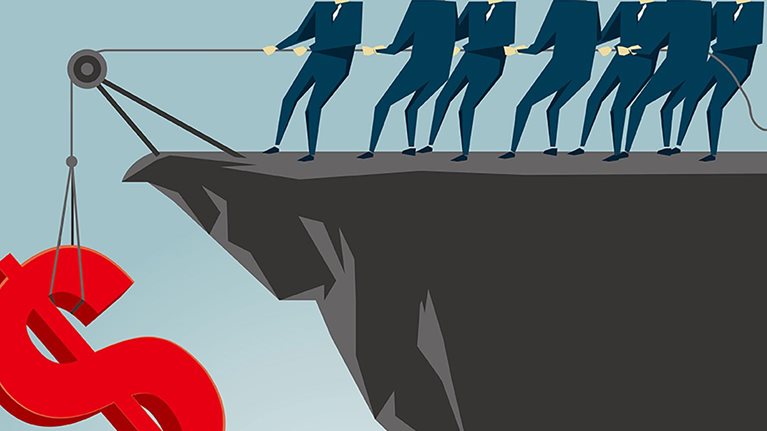Pricing is often viewed as a “topic of last resort” when it comes to negotiations between consumer goods companies and retailers. Consider the case of a $500M nutritional beverage brand that went 14 years without taking a price increase. They maintained margins with cutbacks in brand marketing, consumer promotions, and investment in innovation, all of which hurt the long-term health of the brand.
While the discomfort in broaching a “sell-in” price increase to retailers—generally a contentious topic—is understandable, it’s also bad for business. Our biennial customer and channel management (CCM) survey1 shows those companies who take a more strategic view of pricing outperform their peers, delivering an incremental 6 percent in category growth at better margins.
These companies approach pricing more strategically to grow the brands and categories. What that entails is making pricing a part of normal business routines (instead of viewing it simply as a tool to bridge margin gaps), taking a consumer-first approach, and productively engaging retailers (who are the ones who set shelf prices).
1. Stop thinking of pricing as just a “gap-filler” for margin
In our work, we have encountered numerous instances of companies trapped in a margin-driven pricing dynamic that leads to suboptimal decisions. In one extreme case, a business unit (BU) head first committed to a 20 percent price increase to cover margin requirements and quickly reversed that decision once savings were identified in other parts of the P&L. A decision worth millions of dollars, and one that could affect the long-term health of a brand, was reduced to a budget exercise.
Too often, the impetus for pricing actions comes from concerns over margins. Finance initiates the action, brand managers get backed into a corner and give the go-ahead, and the sales force grudgingly takes it to retailers. Not only does this approach create unnecessary organizational tension; it ignores the key players in the pricing equation: the retailer who puts the product on the shelf and the consumer who ultimately buys it.
Changing the conversation with retailers about pricing requires changing the conversation internally first. That means making pricing analytics and decision-making an important part of business routines so they are a part of the dialogue at marketing and sales meetings, with executives when brand plans are reviewed, when annual plans are finalized, and when new products are introduced.
2. Focus on the consumer
All good pricing decisions should start with the consumer and work backwards. This not only recognizes who ultimately is paying but also forces the external focus needed to keep brands relevant with consumers by shaping the innovation agenda.
A variety of methods are available to help companies get a handle on how much consumers are willing to pay for a product, from simple price-elasticity studies to more sophisticated conjoint studies. Heuristic approaches (systematically structuring and assessing business judgment) can also be effective by combining a set of factors that analyze consumer willingness to pay as a function of, for example, overall category demand, brand equity scores versus competing brands’, and sales exposure in discount channels.
More long-term, consumer-first pricing creates a link between pricing and innovation. Consider the case of a company whose R&D department was bombarded with requests for “packaging innovation” every season, only to find that consumers were unwilling to pay more for those innovations. Once this came to light, the company put an end to packaging-only innovation to focus its efforts on innovation that consumers valued, i.e., would pay for. The company has now implemented a process that explicitly attaches a dollar value to new product features.
3. Engage retailers in a strategic dialogue about the category
The best-performing consumer goods companies frame pricing discussions with retailers around broader category health, rather than focusing exclusively on cost inflation as the driver of price change. One company that implemented a heuristic approach to understand what customers would pay for a product was able to turn its pricing meetings with retailers into a more strategic dialogue on a host of consumer-oriented factors, a marked departure from the prior regime in which pricing discussions centered on commodity cost fluctuations.
In another example, one packaged food company analyzed more than two million shopper transactions to prove that (a) consumers were willing to pay more, and (b) volume was currently being sourced from products with higher margins thereby reducing overall category value. The company built a story around this insight that advocated resetting the pricing hierarchy, provided new ideas on promotional practice to maximize category performance and increase overall margins, and made proposals to re-energize the category with new product investments, media, and in-store promotions. The result: The retailer rolled back the irrationally low “magic” price point, which enabled both a long-due price increase that drove significant revenue growth and, more important, a new dynamic for conversations around price.
Many top-performing companies build dedicated pricing teams and systematic processes that enable this more productive approach focused on understanding what the customer will pay. As a result, they are positioned to more consistently employ a set of pricing practices that allow them to outperform peers and drive growth.
- Survey conducted by McKinsey & Company in collaboration with GMA and Nielsen, the Customer Channel Management survey has been conducted since 1978 and is consistently ranked as one of the most influential surveys in the industry.

